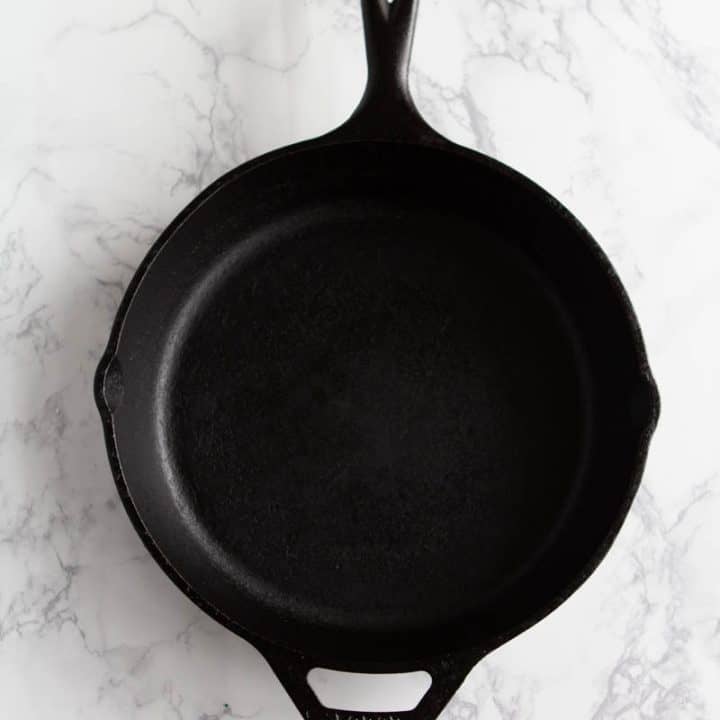Easiest Way to Make Delicious Baking Cast Iron To Season
Baking Cast Iron To Season. When you're done, place the seasoning on a baking sheet, open side up, and heat for one hour. This is what is referred to as polymerization, or the process of converting fat into plastic. "Aside from the recommended flaxseed oil, you can season your cast iron skillet with any unsaturated oil," Balistreri says, noting that you should avoid saturated oils such as lard and grease.

Line a rimmed baking sheet with foil and place it on the lower rack of.
Essentially, curing is just baking oil onto cast iron via a process called polymerization, forming a natural, almost non-stick cooking surface that — bonus — also helps prevent your pan from rusting.
Pre-seasoning the pan before you use it turns the surface of the pan from rough and matte to shiny and smooth, protects against rust, and produces that natural nonstick coating. If the seasoning in your pan is sticky, this is a sign of excess oil built up on the cookware. One of the easiest ways to maintain the seasoning on your cast iron is to cook with it regularly!
But before you start cooking, there are a few things you want to know about first. For the uninitiated, seasoning refers to the oil that's baked onto the cast iron's surface that makes food not stick and helps keep the surface from staining. Cast-iron cookware also lasts forever—in fact, cast iron gets better the more you use it—as long as it's properly cared-for.
If your cast-iron cookware has rusty patches, looks a bit dull, or isn't as nonstick as it used to be, it's time to reseason. You can then give it a thin coating of a heat-resistant fat like vegetable oil to bake into its surface. For the uninitiated, seasoning refers to the oil that's baked onto the cast iron's surface that makes food not stick and helps keep the surface from staining.
When you're done, place the seasoning on a baking sheet, open side up, and heat for one hour. The best oil to use to season your cast iron is either flaxseed oil or grapeseed oil. Seasoning a Cast-Iron Skillet Seasoning is the process of adhering oil to the surface to create a nonstick coating.
Rinse and dry thoroughly before applying a liberal coat of solid vegetable shortening to every nook and cranny. Before using cast iron for the first time, wash it thoroughly in soap and water. To prevent the cast iron baking molds from getting rusty people to season them.
Corn oil, sunflower oil, or olive oil and all great alternatives that will give you just as good results. Sometimes layers of seasoning may flake off your cast iron pan. If you ask five cast iron enthusiasts how to season cast iron, you will probably get six answers.
If you're baking your favorite recipe in cast iron for the first time, keep in mind that it might brown quicker, so check your baked goods a few minutes before you think it might be done. Curing, or seasoning, is an essential step after purchasing new cookware. This is what is referred to as polymerization, or the process of converting fat into plastic. "Aside from the recommended flaxseed oil, you can season your cast iron skillet with any unsaturated oil," Balistreri says, noting that you should avoid saturated oils such as lard and grease.
Scrub the pan gently with bristle brush or sponge. Steps to season a rusty cast iron frying pan. Then, wash the cast-iron in hot, soapy water.
It can be achieved by coating or seasoning the skillet with cooking oil and giving it a baking for an hour. And that means seasoning, or coating the pan with a layer of oil or. Cast-iron cookware also lasts forever—in fact, cast iron gets better the more you use it—as long as it's properly cared-for.
When you're done, place the seasoning on a baking sheet, open side up, and heat for one hour. Acidic mixtures will damage the seasoning. Scrub the pan gently with bristle brush or sponge.





